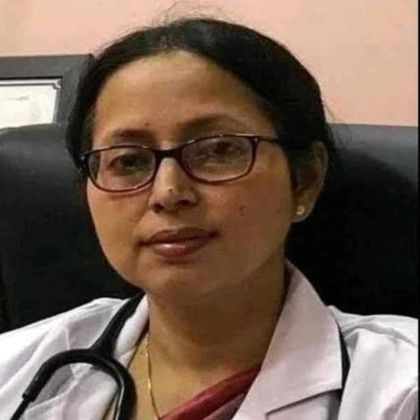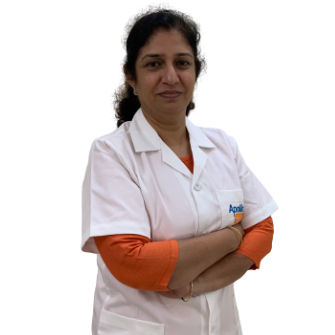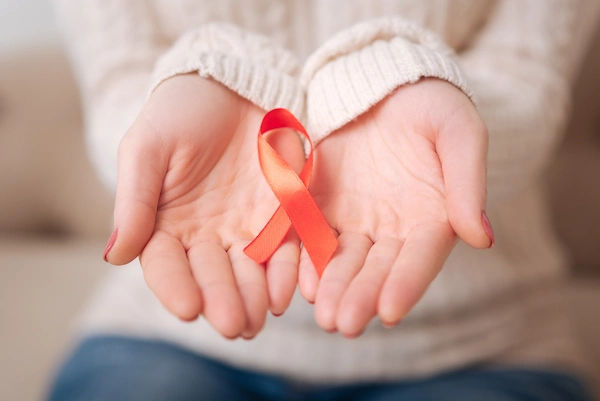Guide to Pledge to Spread Awareness About Breast Health
Take the pledge to spread awareness about breast health. Learn how to recognise symptoms, promote screening, and inspire your community to act. Turn awareness into life-saving action with this complete step-by-step guide.

Written by Dr. Dhankecha Mayank Dineshbhai
Reviewed by Dr. Vasanthasree Nair MBBS
Last updated on 28th Oct, 2025
.webp?tr=q-80,f-webp,w-350,dpr-2,c-at_max 700w)
Introduction
Pledging to spread awareness about breast health is more than wearing a ribbon—it’s a promise to learn, act, and inspire others to protect their wellbeing. Breast cancer is the most commonly diagnosed cancer worldwide, yet many people still miss early warning signs or delay screening due to fear, myths, or limited access. Your pledge can change that.
In this practical guide, you’ll discover how to pledge, spread, and sustain awareness with evidence-based steps you can start today. Learn the essentials of breast self-awareness, symptoms to never ignore, and current screening guidance. You’ll also find conversation scripts, social media strategies, and community ideas to help track your impact so your awareness efforts lead to real screenings and earlier diagnoses. Whether you’re advocating for yourself, your family, your workplace, or your neighbourhood, this guide equips you to make your pledge meaningful—and to help others take theirs.
Why Your Pledge Matters Right Now
The Global Picture of Breast Cancer
Breast cancer is the most commonly diagnosed cancer globally, affecting millions each year. Early detection and timely treatment dramatically improve outcomes, yet awareness and access remain unequal across communities. Pledging to spread awareness helps bridge that gap by encouraging people to recognise symptoms, understand screening options, and seek care earlier.
Consult a Top Gynaecologist for Personalised Advice
Early Detection Saves Lives
Detecting breast cancer early is linked with significantly higher survival rates. Regular mammograms and self-awareness of changes in the breast can make the difference between early and late detection. Your pledge—to book your own screening, share reminders, and start conversations—can directly lead to better outcomes.
Turning Awareness into Action
Awareness alone is not enough. Effective campaigns combine education with measurable results: people reached, screenings booked, and follow-ups completed. This guide will help you set SMART goals, use inclusive messaging, and measure your progress so your pledge drives lasting change.
Breast Health Basics Everyone Should Know
Normal Changes Across the Lifespan
Breasts naturally change throughout life. Hormonal shifts during puberty, menstruation, pregnancy, breastfeeding, and menopause can alter texture and tenderness. Knowing what’s normal for you—your baseline—helps you recognise unusual or persistent changes. This is called breast self-awareness.
Common Risk Factors
- Unchangeable risks: age, sex assigned at birth, family history, genetic variants (such as BRCA1 or BRCA2), and past chest radiation.
- Modifiable risks: alcohol consumption, hormone therapy, physical inactivity, and obesity.
- A “risk-aware” pledge might include gathering your family history, discussing your personal risk with a clinician, and making healthy lifestyle adjustments.
What Breast Self-Awareness Really Means
Breast self-awareness means being familiar with how your breasts usually look and feel, without following a rigid monthly schedule. If you notice a new lump, skin puckering, nipple inversion, or unusual discharge that persists beyond a menstrual cycle, seek medical advice promptly.
Symptoms to Never Ignore—and When to Seek Help
Common Warning Signs
Watch for:
- A new lump or thickened area
- Persistent breast or nipple pain
- Nipple retraction or inversion
- Redness, rash, or scaling
- Dimpling or “orange peel” texture
- Swelling of part or all of a breast
- Unusual or bloody discharge
- A change in breast size or shape
- A non-healing sore
- Lump in the armpit
- Persistent itch or rash
When It’s Urgent
If a symptom lasts more than two weeks or worsens, arrange an evaluation. Urgent attention is needed for rapidly enlarging lumps, bloody discharge, or infection with fever.
Consulting a Clinician
Expect a clinical breast examination and possibly imaging such as a mammogram or ultrasound. If necessary, a needle biopsy may follow. If in-person appointments are difficult to access, you can consult a doctor online with Apollo24|7 to discuss next steps.
Screening: Who Needs What and When
Mammograms
Routine mammograms are the gold standard for early detection. Most guidelines recommend screening every two years for women aged 40–74 at average risk. Those with dense breasts or higher risk factors may need earlier or more frequent imaging.
Clinical Breast Exams and Imaging
A clinical breast exam may be offered as part of routine healthcare. Abnormal findings on a screening mammogram are followed by diagnostic imaging or biopsy to confirm results.
High-Risk Pathways
If you have a strong family history or known genetic mutations, your clinician may refer you for genetic counselling and enhanced screening, such as an MRI.
Craft Your Personal Pledge
Choose Your Pledge Pillars
- Learn: Understand symptoms, risks, and screening recommendations.
- Screen: Book your mammogram or clinical exam if due.
- Share: Start three meaningful conversations this month.
- Support: Help someone overcome a barrier like transport or cost.
SMART Goal Examples
- “I’ll book my mammogram by next month and encourage two friends to do the same.”
- “I’ll host a short awareness talk at work this quarter.”
- “I’ll distribute 50 symptom leaflets in my community this month.”
Accountability and Reminders
Partner with a friend to stay on track. Use calendar reminders, digital checklists, and quarterly reviews to maintain your momentum.
Spread Awareness at Home and in Your Community
Conversation Starters
Try: “I’ve pledged to look after my breast health—will you join me?” Keep language open and approachable.
Culturally Sensitive and Low-Cost Ideas
Translate resources, partner with community leaders, and share survivor stories (with consent). Use WhatsApp groups, local notice boards, or small events to spread accurate information.
Collaborate with Local Health Workers
Partner with clinics, NGOs, or health workers who can offer free or subsidised screening and provide transport support.
Workplace and School Campaigns That Work
This is crucial, lets see the ways we can take it forward:
One-Month Awareness Plan
- Week 1: Launch with a pledge link and symptom guide.
- Week 2: Invite a guest speaker or survivor.
- Week 3: “Book Your Screening” reminder day.
- Week 4: Host a myth-busting quiz.
Policy Support
Encourage employers to offer paid screening time and annual health days combining different checks.
Inclusive Campaigns
Avoid gender stereotypes. Include men and nonbinary individuals, use accessible materials, and ensure diversity in your messaging.
Master Social Media: From One Post to a Movement
Content Pillars
Rotate posts with: personal stories, key statistics, symptom checklists, and myth-busting graphics. Always include a clear call to action.
Accessibility Tips
Use clear hashtags such as #MyBreastHealthPledge, add image descriptions, and include captions in videos.
Measure Your Impact
Track engagement (shares, comments, screenings booked) to refine your strategy and identify what inspires action.
Fundraising and Resource Mobilisation
Learn how to raise funds and techniques for the mobilisation of money:
Transparent Giving
Support organisations that clearly show where donations go—preferably towards screenings and education.
Micro-Fundraisers
Host bake sales, fitness challenges, or “pledge for every screening” drives to fund community outreach.
In-Kind Support
Ask local businesses to print materials or offer spaces for awareness events.
Busting Myths and Reducing Stigma
Common Myths vs Facts
- Myth: “Only older women get breast cancer.”
Fact: It can affect younger people and men, too. - Myth: “A lump always means cancer.”
Fact: Many lumps are harmless, but evaluation is vital. - Myth: “Mammograms are unsafe.”
Fact: The radiation dose is minimal compared with the benefit of early detection.
Men and Transgender Breast Health
Men and gender-diverse individuals can develop breast cancer. Screening and awareness should be inclusive of all.
Reducing Fear of Screening
Explain what to expect, address discomfort concerns, and normalise feelings of anxiety while highlighting the importance of screening.
Track, Report, and Celebrate Your Impact
Create a Dashboard
Track how many people you’ve reached, conversations held, pledges signed, and screenings booked.
Share Success Stories
Combine data with short personal stories to humanise your results.
Plan Ahead
Set a 90-day goal to expand your reach, translate resources, or train new ambassadors.
Where to Get Help
Finding Screening Services
Check with national health programmes, hospitals, or NGOs for affordable mammograms and community clinics.
Genetic Counselling
If you have multiple family members affected by breast or ovarian cancer, ask for a referral to a genetics specialist.
Telehealth and Home Services
If you notice a change or have concerns, consult a doctor online with Apollo24|7 for guidance or to arrange an in-person visit.
Your Printable Pledge and Checklists
Weekly Action Checklist
- Learn: Read one credible article.
- Screen: Confirm when your next screening is due.
- Share: Start one awareness conversation.
- Support: Help one person remove a screening barrier.
Event Planning Checklist
Venue, speaker, printed materials, booking QR code, and consent for photos or stories.
Post-Campaign Review
Summarise results, thank contributors, and outline next steps.
Sustaining Momentum Beyond Awareness Month
Learn how to execute the awareness and sustain the speed:
Quarterly Focus
Cycle through key topics:
- Q1: Symptoms and self-awareness
- Q2: Screening access
- Q3: Risk and lifestyle
- Q4: Survivor support
Build Peer Ambassadors
Train a small group to lead awareness efforts in their own communities.
Integrate with Other Health Initiatives
Combine breast health with cervical screening or general wellness campaigns to normalise regular checks.
Conclusion
A pledge to spread awareness about breast health is a simple yet powerful act. By learning, watching for changes, and encouraging screening, you not only protect yourself but empower others. Awareness becomes impactful when it leads to tangible actions—like booking mammograms, hosting conversations, and breaking down barriers to access.
Earlier detection saves lives, and your pledge can directly contribute to that outcome. Use this guide to set SMART goals, plan inclusive activities, and measure your results. If you notice a new or persistent change, do not delay—seek professional advice. If in-person access is difficult, speak with a doctor online through Apollo24|7 for support and follow-up arrangements. Keep your pledge alive year-round, celebrate small victories, and inspire your community to act. Together, we can turn awareness into early detection—and save lives.
Consult a Top Gynaecologist for Personalised Advice
Consult a Top Gynaecologist for Personalised Advice

Dr. Saheli Kapat
Obstetrician and Gynaecologist
11 Years • MBBS, DNB Obstetrics & Gynaecology,FMAS(Fellowship in Minimal access surgery)
Kolkata
MCR SUPER SPECIALITY POLY CLINIC & PATHOLOGY, Kolkata

Dr. Somdutta Basu
Obstetrician and Gynaecologist
7 Years • MBBS, MS Obstetrics & Gynaecology
Bansdroni
Siddhita Healthcare., Bansdroni

Dr. Sangeetha M
Obstetrician and Gynaecologist
21 Years • MBBS, MS ( Obstetrics & Gynaecology )
Bansdroni
Siddhita Healthcare., Bansdroni

Dr. Chaitali Roy
Obstetrician and Gynaecologist
28 Years • MBBS , MS (Obstetrics & Gynaecology)
Kolkata
Roy's Clinic, Kolkata

Dr. Ritika Khurana
Obstetrician and Gynaecologist
16 Years • MBBS, DGO(GYNAECOLOGY AND OBSTETRICS)
Pune
Dr Rupali and Dr Ritika, Pune
Consult a Top Gynaecologist for Personalised Advice

Dr. Saheli Kapat
Obstetrician and Gynaecologist
11 Years • MBBS, DNB Obstetrics & Gynaecology,FMAS(Fellowship in Minimal access surgery)
Kolkata
MCR SUPER SPECIALITY POLY CLINIC & PATHOLOGY, Kolkata

Dr. Somdutta Basu
Obstetrician and Gynaecologist
7 Years • MBBS, MS Obstetrics & Gynaecology
Bansdroni
Siddhita Healthcare., Bansdroni

Dr. Sangeetha M
Obstetrician and Gynaecologist
21 Years • MBBS, MS ( Obstetrics & Gynaecology )
Bansdroni
Siddhita Healthcare., Bansdroni

Dr. Chaitali Roy
Obstetrician and Gynaecologist
28 Years • MBBS , MS (Obstetrics & Gynaecology)
Kolkata
Roy's Clinic, Kolkata

Dr. Ritika Khurana
Obstetrician and Gynaecologist
16 Years • MBBS, DGO(GYNAECOLOGY AND OBSTETRICS)
Pune
Dr Rupali and Dr Ritika, Pune
More articles from General Medical Consultation
Frequently Asked Questions
What is a breast cancer awareness pledge?
It’s a personal commitment to learn, follow screening guidelines, talk to others, and help remove barriers to care.
When should I start mammogram screening?
Most people should begin regular mammograms from age 40, typically every two years. Discuss your personal timing with your clinician.
What are the main symptoms to watch for?
A new lump, nipple inversion, skin dimpling, persistent pain, or unusual discharge should be promptly assessed.
How can I spread awareness at work?
Host micro-events, share resources, and encourage paid time off for screenings.
Do men need to worry about breast cancer?
Yes. Men can develop breast cancer, too. Any persistent change in the breast or nipple area should be checked promptly.




